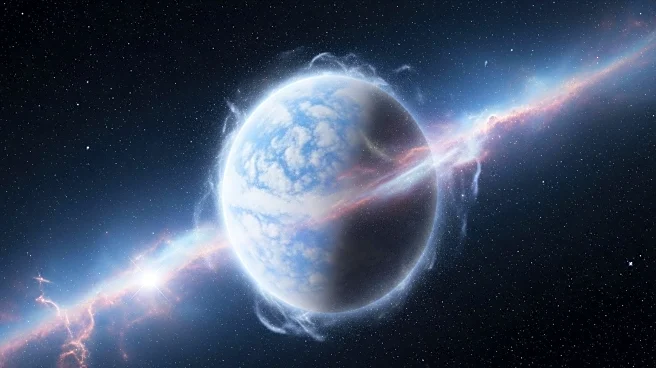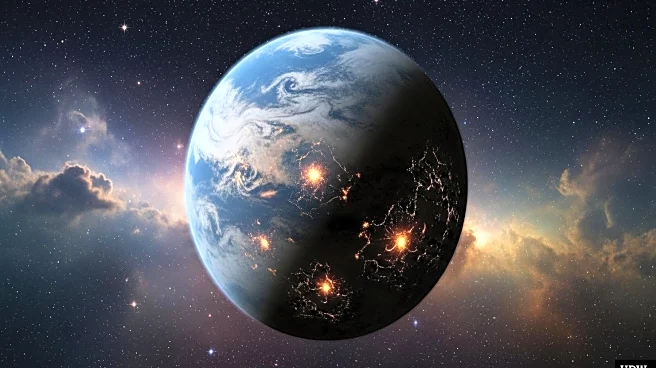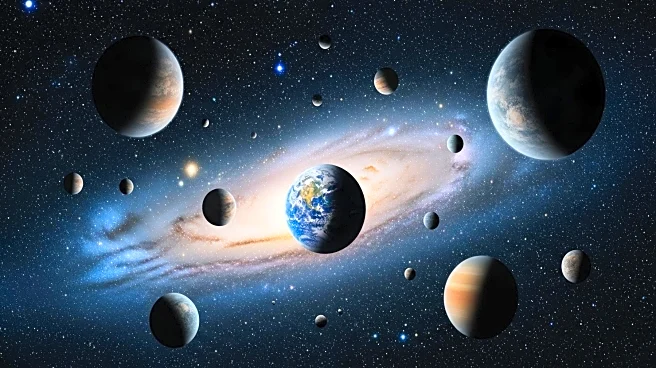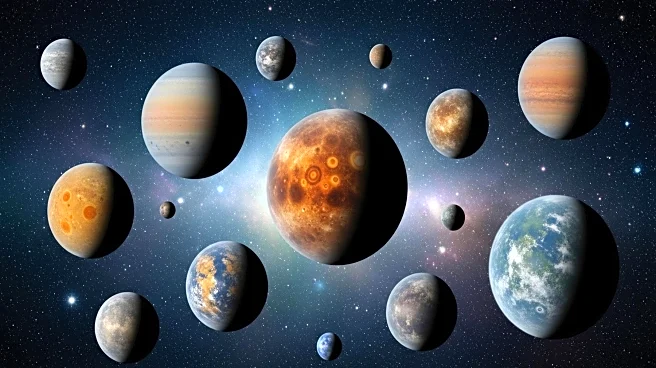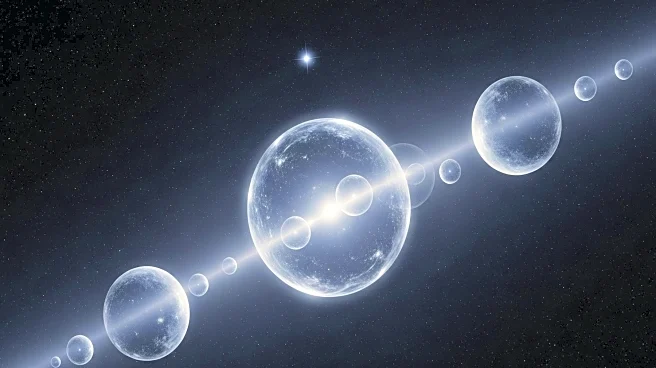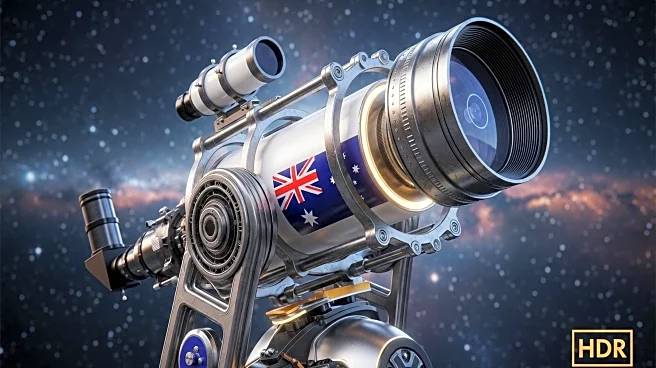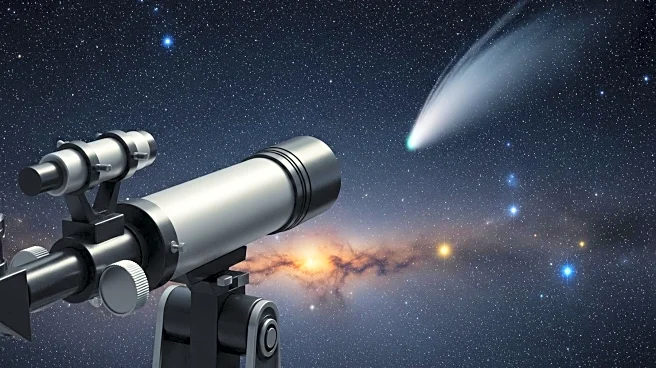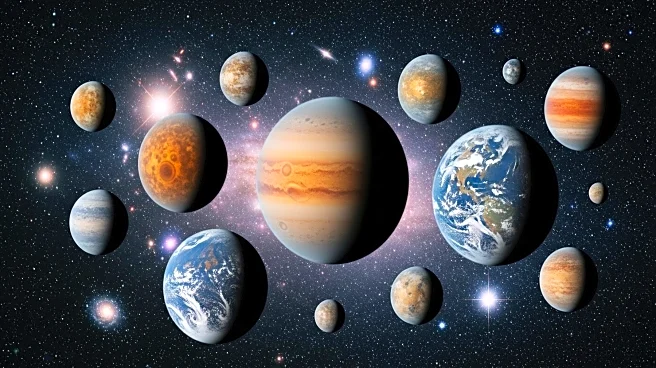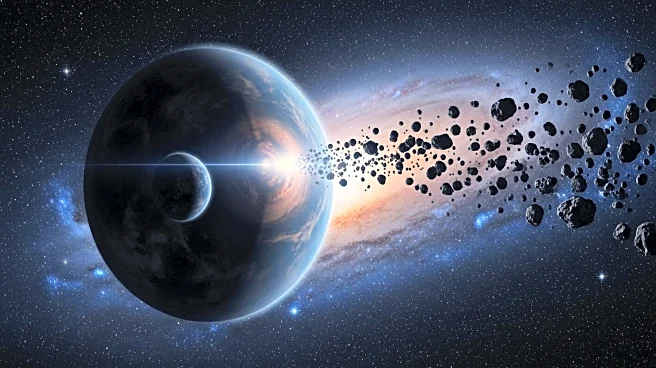What's Happening?
Astronomers have identified an exoplanet, TOI-4507 b, located approximately 578 light-years from Earth, which defies conventional planetary behavior. This planet orbits a young star, only 700 million years old,
and is classified as a 'super-puff' due to its large size and low mass. TOI-4507 b is nine times wider than Earth but only 30 times its mass, making it as wide as Jupiter but significantly lighter. The planet's orbit is nearly polar, swinging around its star almost perpendicular to the star's rotation, completing a revolution in 105 days. Researchers used data from NASA's Transiting Exoplanet Survey Satellite and ASTEP to study this planet, ruling out tidal heating as a cause for its inflated atmosphere due to its distance from the star.
Why It's Important?
The discovery of TOI-4507 b challenges existing theories about planetary formation and behavior, particularly regarding 'super-puff' planets. Its unique characteristics provide an opportunity for astronomers to study atmospheric composition and dynamics in exoplanets, potentially offering insights into planetary evolution and the conditions that lead to such anomalies. The planet's brightness and low-density atmosphere make it an ideal candidate for observation with the James Webb Space Telescope, which could reveal more about its atmospheric composition and the processes that led to its current state.
What's Next?
Future observations with advanced telescopes like the James Webb Space Telescope are expected to provide more detailed information about TOI-4507 b's atmosphere. These studies could help astronomers understand the mechanisms behind its unusual characteristics and contribute to broader knowledge about exoplanetary systems. Researchers may also explore the possibility of other planets in similar orbits and conditions, expanding the understanding of planetary diversity in the universe.
Beyond the Headlines
The discovery of TOI-4507 b raises questions about the formation and stability of planetary systems, particularly those with young stars. The planet's nearly polar orbit suggests a complex history, possibly involving interactions with other celestial bodies or significant events that altered its trajectory. Understanding these dynamics could have implications for the study of planetary systems and their evolution over time.
